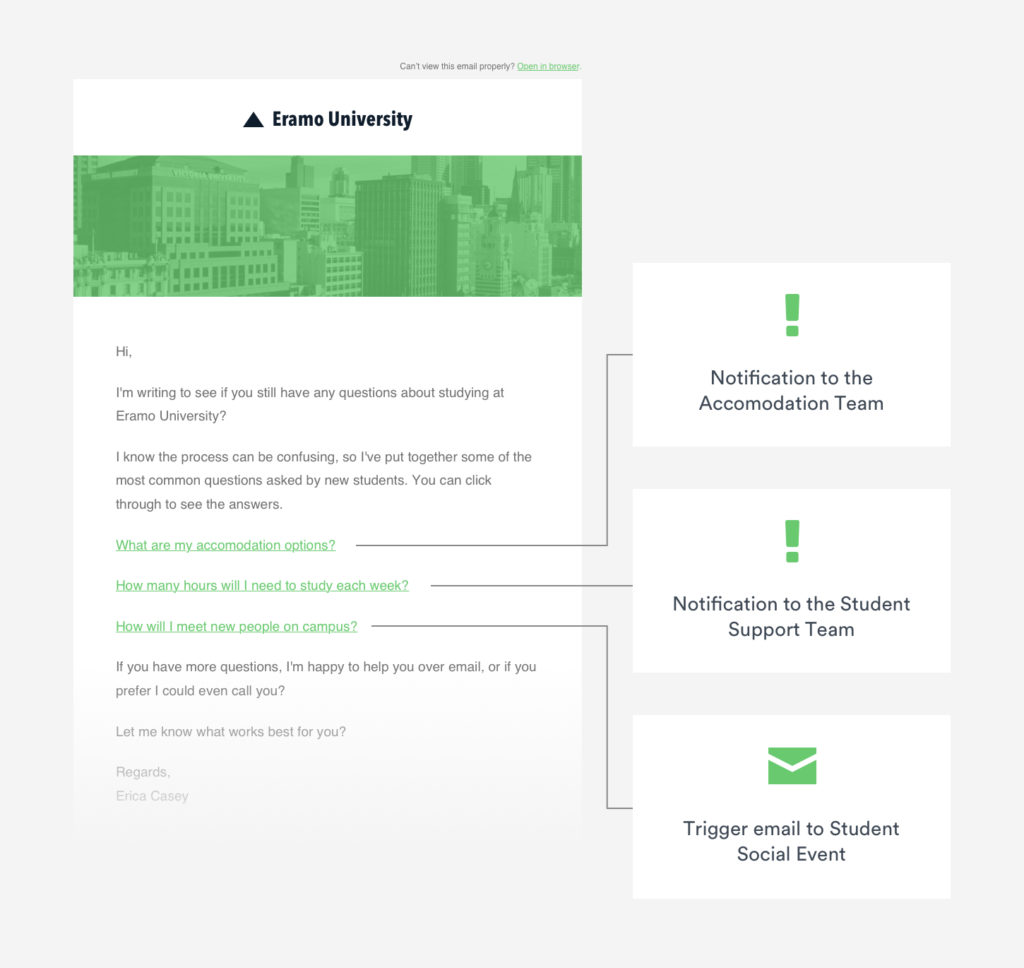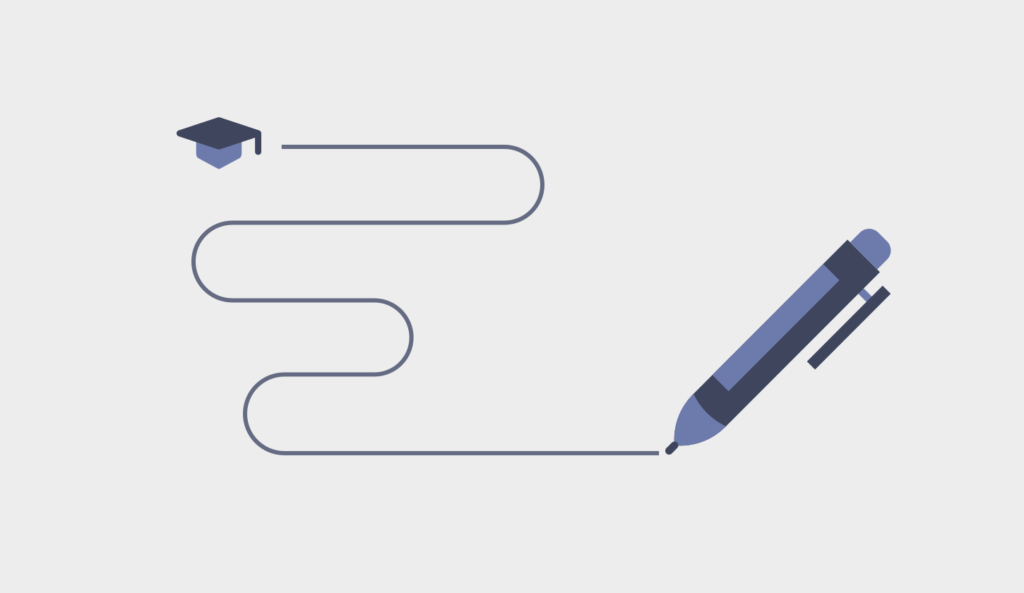BLOG
Driving the Student Experience with Student Journey Mapping
You wouldn’t traverse a mountain trail without a map or a flashlight, so why adopt this approach in your marketing strategies? The ultimate goal of any higher education institution is student recruitment, but without the right knowledge and tools, you’ve got yourself a problem.
Many institutions adopt a ‘close your eyes, spin the globe and point’ approach to their customer journey mapping, preferring to rely on historic audience personas. Today’s students are nothing like the class of 2000 – their student journey to enrolment, by comparison, is unrecognisable.
When it comes down to it, thorough student journey mapping and using the right channels for the job is the difference between guiding your prospect to a desirable destination or leading them off track.
With so many higher educational institutions competing for enrolments, student recruitment is proving to be a challenging and critical component of the student lifecycle. To survive and prosper, providers need to recognise the changing needs and customer journey mapping of today’s student.
Where Are You Going Wrong?
So, you’ve discovered how to successfully generate website traffic and have lead generation campaigns to help fill up your database. Your website is optimised and provides a great user customer experience, what next?
The packing list doesn’t end there. Marketo reports, approximately 96% of visitors that come to your website are not ready to convert. How can you engage each prospective student individually based on their stage of intent, interests and educational goals, before getting them to enrol? What elements should you highlight for students in different stages of their student journey and student experience?
The key to achieving efficiency across all student journey maps, from the first point of contact through to acceptance and enrolment, is to streamline them through marketing automation. It’s time to make sure that your best prospective students aren’t getting left behind.

Marketing automation and lead nurturing methodologies are used to engage prospective students with highly relevant, personalised content at a specific time, through their preferred medium (touch points), to move them further through their enrolment journey.
Here are three key components to successfully recruit the current generation of prospective students:
Data-Driven Buyer Personas
Before you shoot in the dark, you need to understand who you’ll be targeting. The first step to building successful email nurturing programs is to segment your database into defined student personas. Identify the prospective students which best fit your ideal student persona and focus your efforts on them.

- Affinity categories in Google Analytics.
According to Salesforce “State of Marketing” report 2017, 60% of B2B marketers say they’ve been more focused on improving audience segmentation and personas over the past 18 months. Additionally, 52% of customers are likely to switch brands if a company doesn’t make an effort to personalize its communications to them.
Let’s face it, in 2017 universities are brands that need to compete more like a corporate than a government agency. You need to know about what kind of things your audience is looking for, and how you can reassure them before they even think of the question.
Your current students are the best place to start when creating buyer personas. Within your core segments, you will probably notice similar behavioural patterns and attributes which will inform your nurture emails and database segmentation.
This should continue to evolve over time – never forget the data you use is generative, not conclusive. Begin by identifying the following four baseline cornerstones:
- Demographic
- Needs
- Goals
- Emotions
How old are they? Are they married or single? What are their motivations for studying? Compile this data and create a persona for each segmentation. You can use this to align your email messaging. The email you send to a high school student will likely look very different to the one you send to a mature age student. Likewise students looking at undergraduate and postgraduate degrees — different people, different needs. Your content needs to speak directly to your persona, emphasise the benefits and experiences they are seeking and address any pain points or concerns.
Now, it’s time to bring the maps back out. Identify information requirements, touch points and the decision journey of each unique persona to determine what content you need to create to encourage each type of prospective student through each step in their decision-making process. Try and answer questions before they come up, as this will make potential students feel that you really know their situation and that you can help them out.
Map Out the Student Journey
Your prospective students all have very different needs, interests and are at very different stages of the student journey. Begin by taking a close look at your CRM data as this provides crucial information to help inform your nurture strategy.
Consider checking each prospect for:
- Frequency of website visits and multiple page views
- Specific pageviews (how to apply, fees and scholarships, accommodation, student community)
- Engagement on your site (clicks, downloads, chatbots)
Try profiling your existing database. This can be done by sending an email with a simple question, designed to help you understand one of the following key factors:
- Where do we rank on their preference list?
- Is there something about the process that’s confusing them?
- What did they like about our institution in the first place?
While we don’t recommend asking all of these questions directly, well placed invitations and link can provide insights that help us understand our audience.
In the past we’ve delivered emails on behalf of our clients that invite students to click through to a tracked FAQ page and based on the question the prospect goes to, we send an automated email to that user or a notification to the customer service team to get in touch.

When are you looking to study or what best describes your study level? The answer to these questions will help you segment your database and determine which stage they are at. Once the stage is determined, begin to look at how you can maximise this time:
- WHO is at this stage?
- WHERE can you reach them?
- WHAT key decisions are they making?
- HOW can you make the most out of this?
Analysing your database allows you to pay close attention to those students who might need more guidance, like students seeking a first-year experience, and also to identify those who might be closer to enrolling. Identifying information and key pain points will help to determine your next steps in nurturing each prospective student with relevant content.
Make sure not to ignore any lost opportunities. Find ways to establish why they were not ready to study, with emails, surveys or phone calls and add them to a re-engagement nurture. A prospective student that did not progress through the student journey in the past may still be responsive and they may be willing to fill out a student experience survey to let you know why things didn’t work out
A student experience survey is also good to distribute to your current students for insight into how they picked your institute and what they like/dislike about it. This may give you some insight that students in the ‘considering’ stage may not be able to articulate.
Key Stages of the Student Journey
Understand the unique barriers blocking a prospect from moving through each stage of the student journey and recognise this can and will change.

For example, students in the interest stage can be different for different segments. A prospect from a low socio-economic background might need to organise a scholarship to move to enquiry stage, whereas high socio-economic students or international students might be more focused on proximity to their student accommodation when deciding to proceed.
Some of these stages are:
Interest and Consideration
The prospective student is beginning to browse for an education provider. At this early stage you should introduce yourself, but allow them to browse. Make sure your website is visible in search engine results across relevant keywords.
Persuade your prospects to part with their email address so you can begin lead nurturing. Gated content is ideal for top of the funnel prospects because it doesn’t require too much commitment. eBooks and blog posts can offer easy-to-read, actionable advice and can often cover multiple groups. For example, posts about time management are equally helpful to school leavers and mature age students who have work commitments to juggle.
Initial Enquiry
The prospective student has made an enquiry about a particular course or study area but has not yet enrolled. Provide this prospect with content and messaging to focus on encouraging the potential student to take the next steps. Course guides, career outcomes, financial support and student testimonials are critical at this stage. If you can capture some information about their educational experience here, you can get valuable insight into what they may or may not know about the environment they’re applying for. High school students may have taken some tertiary level classes. Prospective students may have started a course or two but dropped out.
Registered for an Event
The prospective student has registered for an open day event which has not yet taken place. Content should be provided that prepares the student for this event; how to plan their day; what events they should be attending. They may need support to take the next step to attendance.
Applied to Course
The prospective student has enrolled but not yet paid or received funding for their course. Content in this part of the service journey needs to encourage the prospect to take that final step and address concerns they may have, including student support, affordability, maintaining study/life balance and integrating into student life. If you have access to learning analytics, try and address the areas that students have reported on. If they love the classroom spaces you have, make that part of your pitch to students. By the time they’ve applied for a course you should have a good idea of who they are and what their interests are, so by being able to state the real positives of the course, they’ll be less likely to withdraw early.
Where to Start
Higher education institutions need to start by building a strategy for long-term decision-making.
Each student has a different set of objectives to achieve before moving through to the next stage of the enrolment process. By leveraging your existing data, and understanding these differences, you can create competitive advantage through customised and engaging student experiences.
When this happens, prospects can arrive at the end of their journey feeling supported, prepared and confident, without the need to channel Bear Grylls.











